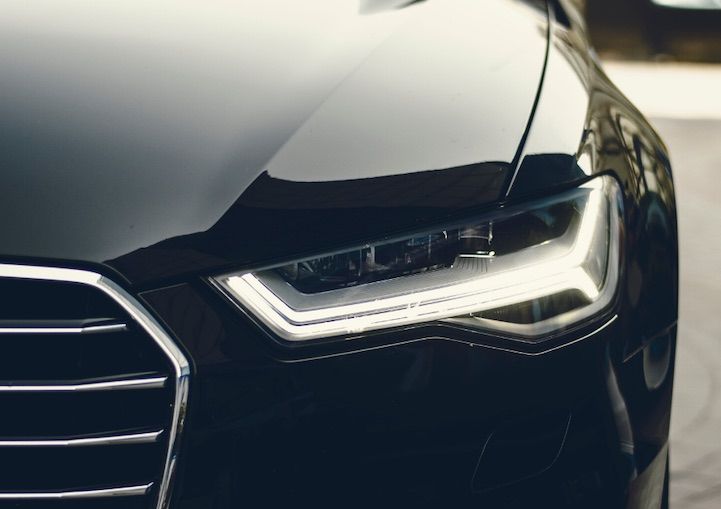INSTANT ON NOW AVAILABLE - Experience Time to first frame as quick as 2 SECONDS
5 Car Brands Transforming Customer Experience with Real-Time 3D

A great ad used to be all it took to get shoppers interested in a car. The sleek lines of a chassis or the roar of an engine would send potential buyers racing to a dealer for a test drive. The ads haven’t lost their character, but 86% of buyers now do their due diligence online before they speak to a sales rep, and they come to the car lot armed with questions.
In 2008 when the Great Recession hit world markets, it forced manufacturers to adopt a new automotive marketing strategy to win over cautious consumers. They needed to be where consumers were conducting their research: online.
Writing the code for an online customer experience
But it wasn’t enough to just put some tech specs online for shoppers to compare models.
Manufacturers had to make a splash. Some of the biggest players in the car industry have started working with game designers and creative agencies specializing in 3D visualization to deliver real-time 3D rendering, allowing for a truly immersive e-commerce customer experience online.
Buyers who play golf or spend weekends in the mountains can upload the dimensions of their clubs and skis to make sure the trunk is big enough, and vertically gifted folks can make sure the car they're interested in will have the head room they need.
Of course, these 3D renderings haven't replaced the experience of getting behind the wheel. But they have augmented it so customers can narrow down their choices before checking out a car in person.
Delivering the in-car experience
Technological advances have made real-time 3D rendering far more sophisticated than it used to be, and real-time 3D is the key to harnessing the power of virtual and augmented reality. VR and AR also have a major role to play in the future of the automotive industry, but some innovative players are also pioneering the use of photo-realistic, interactive 3D experiences can be accessed from manufacturer websites and via smartphones and tablets.
Here are five automotive brands that are leading the way:
- Audi is a market leader in immersive car-buying experiences. The digital configurator and showroom that it created with Unreal Engine has gone through three iterations to get to where it is today. Buyers can go to a showroom and pop on a VR headset to build their dream car. They can choose from more than a hundred million different specifications and experience the car in a number of different environments. X-ray views of the model even allow customers to go under the hood and examine each and every technical component.
- Mercedes-Benz introduced a 3D AR app — Mercedes cAR — and a VR experience when it launched its new A-Class. Buyers can configure their car with the tap of a screen from their phone or tablet. Then, they pull on the VR goggles to get the 3D experience and see precisely what the car will look like inside and out — and in whatever terrain they like. The app is an intuitive, game-like operation that allows users to save a version of their car to share on social media.
- General Motors introduced a web-based 3D configurator in July when it unveiled the 2020 Corvette Stingray. Thousands rushed to check out the configurator and build their own dream car, but traffic locked up the website in the beginning, disappointing many who were wanting to try it. Things improved, and 1.3 million Corvettes were designed by the end of its first month online. Still, it was a lesson for businesses interested in deploying this technology to ensure users get a reliable experience that doesn't disappoint when deploying on a large scale.
- Nissan introduced a car configurator VR experience for the launch of its Nissan LEAF in 2018. The experience was limited to the Nissan Crossing building in Ginza, Japan, but it allowed customers to try out all the possible configurations of the car at scale and even choose from various paint colors. Nissan is also experimenting with placing virtual characters in cars using augmented reality. The virtual avatars are brought to life with actual people back in an office who can chat with you and even push buttons in the vehicle.
- BMW hasn’t adopted VR experiences for its customers yet, but the company is using the technology to improve manufacturing. Planners can sit down in a VR cockpit and see how new designs match up to customer needs before a prototype has even been built. The financial savings for the company could be huge, and buyers will enjoy the benefits of the additional thought that goes into the design.
AR/VR will continue to have a place in automotive showrooms, but the future of the automotive industry is moving in the direction of immersive e-commerce on car manufacturers' websites.
The latest interactive 3D streaming technology makes it possible for global audiences to access this technology on any device, anytime and anywhere.
Real-time 3D rendering has the capacity shake up the automotive industry for decades to come. While ad agencies keep producing the ads that get buyers thinking, it will be the development of more interactive and immersive 3D models streamed to any car buyer’s mobile device, anywhere in the world, that will put them behind the wheel — literally.


